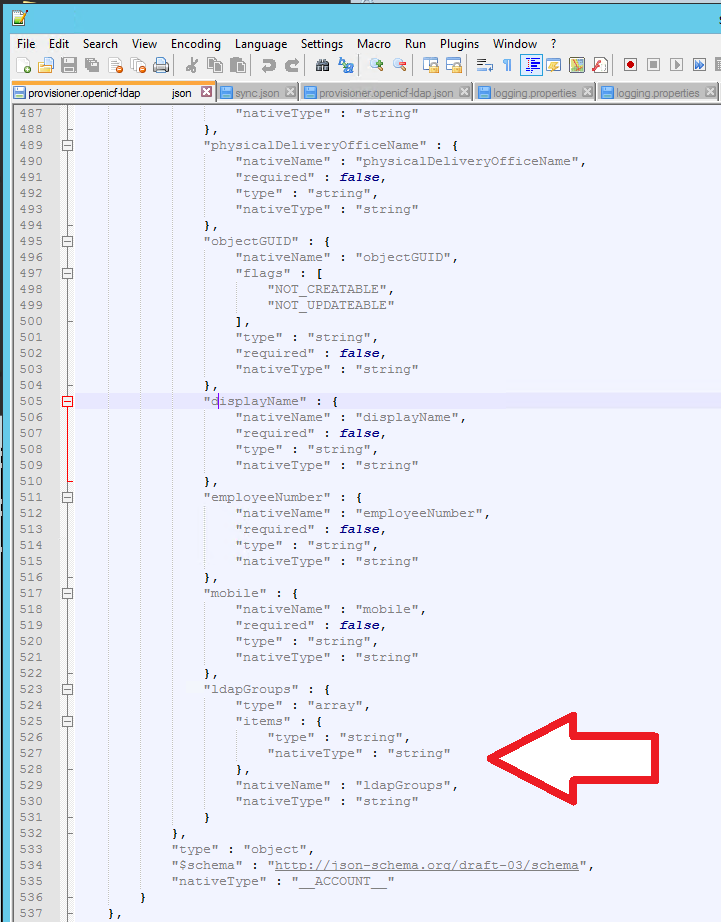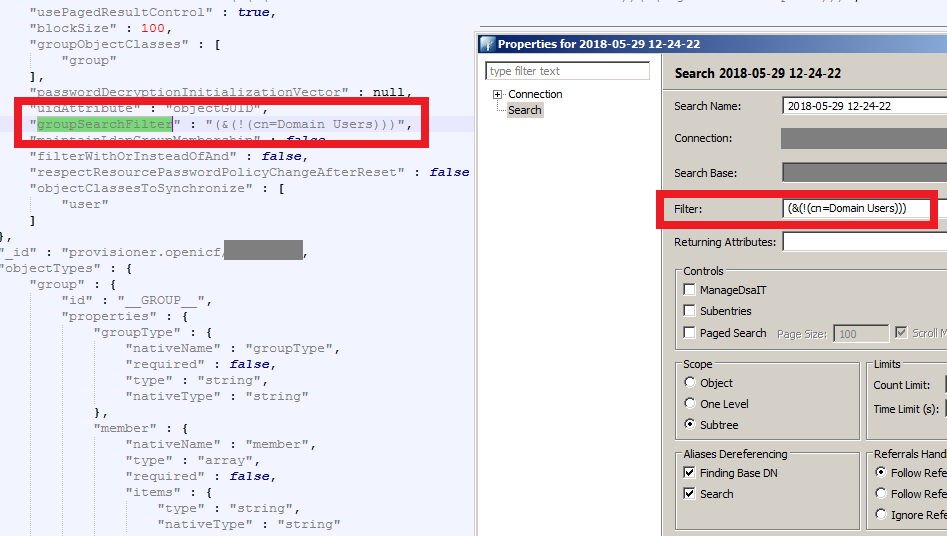For what I see, there's not too many supportive documentations out there that will demonstrate how provision AD group membership with the ICF connector using OpenIDM. The use of the special ldapGroups attribute is not explained anywhere in the Integrators guides to to the date of this blog. This quick blog identifies the tasks required to provision AD group membership from OpenIDM to AD using the LDAP ICF connector. However this doesn't really explain what ldapGroups actually does and there's no real worked example of how to go from an Assignment to ldapGroups to an assigned group in AD. I wrote up a wiki article for my own reference: AD group memberships automatically to users This is just my view, others may disagree, but I think the implementation experience could be improved with some more documentation and a more detailed example here.

To provide group membership associated to the user, you must reverse that idea and update the account (__ACCOUNT__) and the ICF will then acknowledge if the account has group membership associated to the account. To allow OOTB implementation as well as focusing on connector updates, the AD group membership must be populated during the AD account creation or update but the AD group MUST be associated to the ldapGroup attribute. As highlighted in the first image, I have altered the openidm attribute and mapped it to the ldapGroup attribute.

OpenIDM_AD_Group_Provisioning In the Samples guide it is referenced: sample2c

However this doesn't really explain what ldapGroups actually does and there's no real worked example of how to go from an Assignment to ldapGroups to an assigned group in AD. I wrote up a wiki article for my own reference: AD group memberships automatically to users

This is just my view, others may disagree, but I think the implementation experience could be improved with some more documentation and a more detailed example here.

To provide group membership associated to the user, you must reverse that idea and update the account (__ACCOUNT__) and the ICF will then acknowledge if the account has group membership associated to the account.

To allow OOTB implementation as well as focusing on connector updates, the AD group membership must be populated during the AD account creation or update but the AD group MUST be associated to the ldapGroup attribute.
As highlighted in the first image, I have altered the openidm attribute and mapped it to the ldapGroup attribute.
Furthermore, the AD group membership cannot be generated within the sync.conf. As highlighted, you must have the association of the AD group to the user BEFORE the sync.conf association. If you try and associate the attribute during the sync.conf, then you would typically see this stack trace error response
In order to achieve this, you must populate the user object prior to the provisioning. To do this, you can perform this during the user import but you can also perform a PATCH REST API call to OpenIDM user object, as illustrated.
The other thing to note that the provisioner file doesn't necessary accomodate the attribute required to provision AD groups during the provisioning. As highlighted, I included the ldapGroups attribute to the provisioner file.
Please leave a comment - I will always read them :-)
About the author
 Daniel is a Technical Manager with over 10 years of consulting expertise in the Identity and Access Management space.
Daniel is a Technical Manager with over 10 years of consulting expertise in the Identity and Access Management space.Daniel has built from scratch this blog as well as technicalconfessions.com
Follow Daniel on twitter @nervouswiggles
Comments
Other Posts
AS I was migrating my environment into an S3 environment, I wanted to leverage off the SES services that AWS provide, more specifically, to leverage the off the SMTP functionality by sending an email via PHP
Read More...
The WeMos D1 is a ESP8266 WiFi based board is an extension to the current out-of-the-box library that comes with the Arduino installation. Because of this, you need to import in the libraries as well as acknowledging the specific board. This process is highly confusion with a number of different individuals talking about a number of different ways to integrate.
Read More...
NameID element must be present as part of the Subject in the Response message, please enable it in the IDP configuration.
Read More...
For what I see, there's not too many supportive documentations out there that will demonstrate how provision AD group membership with the ICF connector using OpenIDM. The use of the special ldapGroups attribute is not explained anywhere in the Integrators guides to to the date of this blog. This quick blog identifies the tasks required to provision AD group membership from OpenIDM to AD using the LDAP ICF connector. However this doesn't really explain what ldapGroups actually does and there's no real worked example of how to go from an Assignment to ldapGroups to an assigned group in AD. I wrote up a wiki article for my own reference: AD group memberships automatically to users This is just my view, others may disagree, but I think the implementation experience could be improved with some more documentation and a more detailed example here.
Read More...
In the past, the similar error occurred though for the Oracle Identity Management solution. invalidcredentialexception remote framework key is invalid Because they all share the ICF connector framework, the error/solution would be the same.
Read More...
org.forgerock.script.exception.ScriptCompilationException: missing ; before statement
Read More...
ForgeRock IDM - org.forgerock.script.exception.ScriptCompilationException: missing ; before statement
Read More...
When performing the attempt of a reconciliation from ForgeRock IDM to Active Directory, I would get the following error
Read More...
In the past, the similar error occurred though for the Oracle Identity Management solution. invalidcredentialexception remote framework key is invalid Because they all share the ICF connector framework, the error/solution would be the same.
Read More...
During the reconcilation from OpenIDM to the ICF google apps connector, the following error response would occur. ERROR Caused by com.google.api.client.auth.oauth2.TokenResponseException 400 Bad Request - invalid_grant
Read More...

